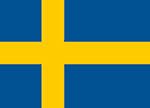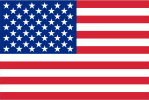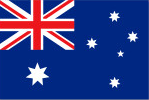Chess is the game played by a number of individuals all over the world from olden days. Many institutes give proper chess training nowadays. It is a pleasant game to spend your leisure time. It improvises the power of your brain as well as your memory. Chess trainers help their students for different championships where they show their talents by defeating the opponent.

This amazing game has a legendary and glorious history. The game has transformed quite a bit from its earliest forms in the world. The modern rehearsal we enjoy today wasn’t known until the 16th century. There were no clocks, and the pieces were not standardized until the 19th.
Let’s look at a summary history of chess!
The Journey of Chess to different regions
- In India around, 7th-century chess was known as Chaturanga which means a battle formation was played as war games in the Northeastern part in the Mahabharata times.
- After 600 CE, a similar game named Shatranj; was played in northern India and Southern parts of Central Asia. In Shatranj, one has declared the winner of the game if he has defeated all the pieces of the opponent except the king or the opponent’s king has captured.
- Buddhist pilgrims spread this game in the east in a different form like an inscribed disk was placed on the intersection of the board’s lines. Chess came to China in 750 CE. and to Japan and Korea in the 11th century.
- It was in the 10th century, Persia took Shatranj to the European world.
Other historical facts about chess
- The first chess game was played in 900s by a historian from Baghdad who acted as a chess trainer for his student.
- After coming to Europe, the names of the chess pieces were changed as per their significance in that part. The Shah became the King, the Vazir was called the Queen, the Gajah became the Bishop, the Ashva became the Knight, the Ratha was called as the Rook and the Padati became the Pawn.
- The term ‘Checkmate’ is commonly used in this game which means ‘Shah Mat’ where Shah means King and Mat means to defeat or to be dead in Persia. You can learn this and other techniques through a chess coach.
- The white and black squares of the chessboard alternating each other first arrived in 1090 in Europe.
- In 1125, as the churches didn’t allow the priests to play chess, a priest made a folding Chessboard which looked like two books being put on one another so that nobody would come to know.
- In 1254, the game was banned by King Louis IX in France. But, many other European kings liked the game very much.
- In 1280, the act of Pawn to move two places rather than one place ahead came into being.
- The Islamic countries didn’t allow the statues of animals or people so the traditional chess pieces aren’t made to resemble their actual name.
- In the early period, the queen moved diagonally one square, then afterwards two squares at a time. It was the influence of Spanish queen Isabella that allowed the Queen to be the strongest piece on the board.
- The first printed chess book came in 1495, which has used as a chess trainer.
- In the 15th century, it was recognized as the Royal game.
- Chess training could be taken from the first chess magazine, which has published in 1836.
- In 1883, the push-button clock had introduced by Thomas Wilson. Before that, the use of Sandglasses started in 1862.
- In 1886, the first World Chess Championship was held, which had won by Wilhelm Steinitz.
- In 1997, IBM’s computer Deep Blue defeated World Chess Champion Garry Kasparov.
So, the interesting history of this game is bound to tempt you to take proper chess training provided here at the Victorious Chess Academy through a proper chess coach.
You can visit www.victoriouschess.com for further information.
































